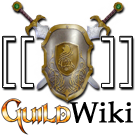|
Shortcut:
|
|---|
- Bureaucrats can grant access to the rollback tool to users that they find responsibly fighting wiki vandalism, without application on their part. These users are listed at Special:ListUsers/rollback.
- If a user wants access to the rollback tool, he or she can ask an active bureaucrat. Theadministrator information page may indicate which bureaucrat is best to approach for this.
- Rollback is intended to revert vandalism. Abuse of this right should be discussed on the Admin noticeboard.
- Users that are determined to have abused rollback may not request rollback again.
What is rollback?
Rollback is a one click revert, when you rollback, you revert all of the last contributor's edits. You do not need to confirm this action, so it is good for reverting mass vandalism, e.g. page blankings.
Bureaucrats would probably give rollback to users they've seen reverting a lot; after every major vandalism spree, you almost always see two or three users in RC doing all the work — giving them a bit of extra tools for that seems like a good plan.
Rollback is not a special user status, it is only a tool to help with reverting vandalism.
How it works
How reverting a vandal works:
- Without rollback rights:
- Open the history of a vandalized page and wait for history to load
- find the most recent version before the vandal's edit and go to that version and wait for page to load
- hit edit at that version and wait for page to load
- hit save, then move on to do something else in a different window/tab
- Rollback method
- Go to the vandal's Contributions page and wait for it to load
- Ctrl+Click on all the Rollback links on that page, and move on to do something else in a different window/tab.
They do the same thing, but Rollback is significantly easier and faster.
SCREENSHOT here of contribs page and possibly history page with rollback
Comparison to Undo
Every user has access to (undo) on the revision difference and revision history screens.
Differences:
- Undo can be attempted on all diffs. Rollback can only be performed against the most recent revision of a page.
- Undo requires choosing a particular range of revisions to undo. Rollback automatically targets all consecutive revisions performed by the most recent contributor.
- Undo can undo a range of edits by different users. Rollback only affects an unbroken sequence of edits by the most recent contributor.
- When performing an undo, additional edits may be performed in the wiki text, and edit summary may be edited. Rollback automatically revert to the version before the current contributor, and the edit summary cannot be altered.
- Undo requires an additional "Save" click. Rollback is performed as soon as as the "Rollback" link is clicked.
Similarities:
- All the revisions that are reverted stay in the page history. The Undo/Rollback action effectively act as a new edit on top of the previous edits that brings the article to the state of a prior version.
When to use it:
- Undo can be used for anything, including content dispute, as long as it doesn't break 1RV. It is expected that the edit summary is manually modified to explain content edits.
- Rollback should only be used against obvious vandalism. Whenever good-faith can be assumed, rollback should not be used, and instead a manual reversion/undo should be performed. This is because rollback does not allow you to modify the edit summary to explain why you are reverting.
